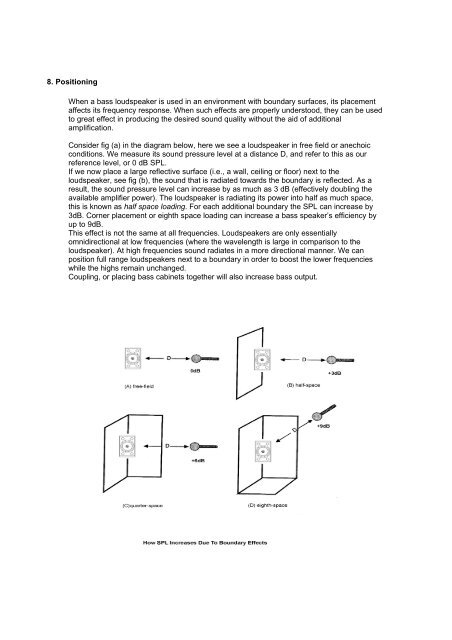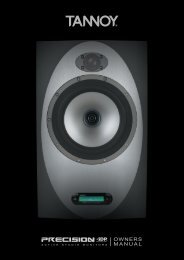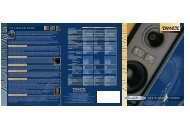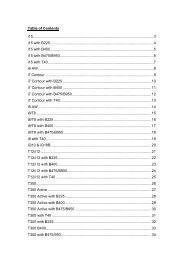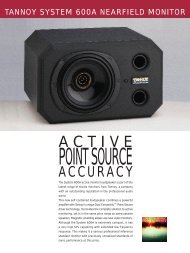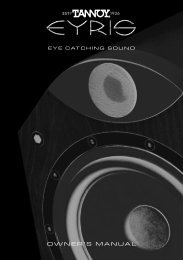B950 USER MANUAL - Tannoy
B950 USER MANUAL - Tannoy
B950 USER MANUAL - Tannoy
You also want an ePaper? Increase the reach of your titles
YUMPU automatically turns print PDFs into web optimized ePapers that Google loves.
8. Positioning<br />
When a bass loudspeaker is used in an environment with boundary surfaces, its placement<br />
affects its frequency response. When such effects are properly understood, they can be used<br />
to great effect in producing the desired sound quality without the aid of additional<br />
amplification.<br />
Consider fig (a) in the diagram below, here we see a loudspeaker in free field or anechoic<br />
conditions. We measure its sound pressure level at a distance D, and refer to this as our<br />
reference level, or 0 dB SPL.<br />
If we now place a large reflective surface (i.e., a wall, ceiling or floor) next to the<br />
loudspeaker, see fig (b), the sound that is radiated towards the boundary is reflected. As a<br />
result, the sound pressure level can increase by as much as 3 dB (effectively doubling the<br />
available amplifier power). The loudspeaker is radiating its power into half as much space,<br />
this is known as half space loading. For each additional boundary the SPL can increase by<br />
3dB. Corner placement or eighth space loading can increase a bass speaker’s efficiency by<br />
up to 9dB.<br />
This effect is not the same at all frequencies. Loudspeakers are only essentially<br />
omnidirectional at low frequencies (where the wavelength is large in comparison to the<br />
loudspeaker). At high frequencies sound radiates in a more directional manner. We can<br />
position full range loudspeakers next to a boundary in order to boost the lower frequencies<br />
while the highs remain unchanged.<br />
Coupling, or placing bass cabinets together will also increase bass output.


